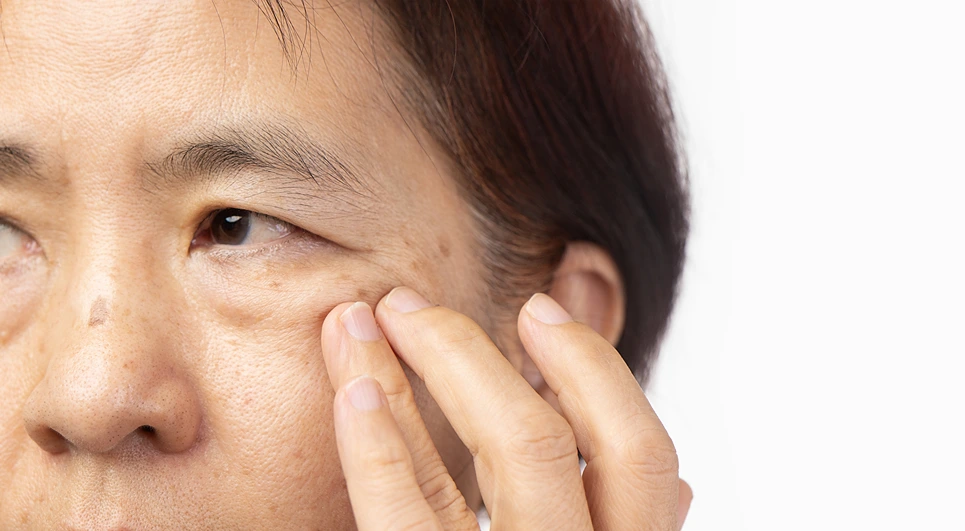


Mohs surgery is a highly effective technique for removing skin cancer, often used on delicate areas like the eyelids.
While the primary goal is to eradicate the cancer completely, preserving the functionality and aesthetics of the eyelid is equally important.
This article will guide you through the before and after stages of Mohs surgery on the eyelid, focusing on the reconstruction process and what you can expect.
We'll cover topics such as eyelid reconstruction, tissue removed, repair eyelid, and cancer removal to give you a comprehensive understanding.
Eyelid cancer, most commonly basal cell carcinoma (BCC) and squamous cell carcinoma (SCC), often requires specialized treatment like Mohs surgery.
This precise technique allows the surgeon to remove cancer cells layer by layer while examining each layer under a microscope.
This ensures complete cancer removal while preserving as much healthy tissue as possible. Understanding this removal reconstruction process is key to managing expectations.
Before your Mohs surgery, your dermatologist or plastic surgeon will discuss the procedure in detail, answer your questions, and explain the potential risks and benefits.
You’ll likely undergo a physical examination and may need to stop taking certain medications. This pre-operative consultation is vital for addressing concerns related to eyelid basal cell carcinoma or cancer basal cell carcinoma on the left eyelid or other locations.
On the day of the surgery, local anesthesia is administered to numb the area around the lesion. The surgeon then removes the visible cancer and a thin layer of surrounding tissue.
This tissue is immediately examined under a microscope. If cancer cells are found, another layer is removed and examined.
This process continues until all cancer cells are eradicated, ensuring complete removal. This meticulous approach is crucial for cancer removal success, particularly for delicate areas like the lower eyelid.

After the cancer is successfully removed, the focus shifts to reconstruction. The complexity of eyelid reconstruction depends on the size and location of the defect created by the excision.
This is where the expertise of your surgeon comes into play, ensuring both functional and cosmetic outcomes.
Your surgeon will carefully consider factors such as the size and location of the defect, the surrounding tissue, and your overall health to determine the best reconstruction method.
This personalized approach is vital for achieving optimal results, whether it's reconstruction eyelid surgery after carcinoma left eyelid removal or addressing carcinoma squamous cell carcinoma on the nose.
Following surgery, you can expect some swelling, bruising, and discomfort. Your surgeon will provide specific post-operative instructions, including wound care and pain management.
The healing process typically takes several weeks, and you'll have follow-up appointments to monitor your progress. Understanding the healing timeline and potential complications is crucial for a smooth recovery.
While Mohs surgery offers a high cure rate for skin cancer, it's important to be aware of potential scarring. Your surgeon will utilize meticulous techniques to minimize scarring, but some degree of scarring is inevitable.
Scarring will typically fade over time, and your surgeon may recommend treatments to further improve their appearance.
After Mohs surgery, protecting your skin from the sun is crucial to prevent future skin cancers. This includes wearing sunscreen with a high SPF, protective clothing, and seeking shade when possible. Understanding the link between sun exposure and skin cancer is key to long-term skin health.

Mohs surgery offers an effective treatment for skin cancer on the eyelid, and meticulous reconstruction techniques can help restore both function and aesthetics.
By understanding the before and after process, you can be better prepared for your surgery and recovery. Remember to discuss any concerns with your surgeon and follow their post-operative instructions carefully.
This comprehensive approach will help you achieve the best possible results and maintain long-term skin health. Whether you are dealing with basal cell carcinoma, squamous cell carcinoma, or melanoma, understanding the nuances of Mohs surgery and reconstruction is vital.
Remember to consult with your dermatologist or plastic surgeon for personalized guidance and treatment. This detailed guide should serve as a valuable resource for understanding the intricate process of Mohs surgery on the eyelid and the subsequent reconstruction journey.
If your desired appointment type or preferred provider is unavailable online, kindly call (978) 525-0100 for Peabody, MA and (603) 742-5556 for all New Hampshire locations. Alternatively please feel free to send us your request via the patient portal, or via email at info@dermskinhealth.com
*For medical dermatology appointments in MA please dial (978) 525-0100 or fill out the appointment request form above.